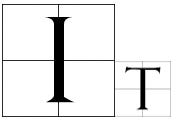Member-only story
The ‘Mad Cow Disease’ Scandal
How the UK Government put millions at risk of a 100% fatal illness
 It was just before Christmas 1984 when Cow 133 on Stent Farm in Sussex, England began to behave strangely. The cow’s head was trembling and it had lost co-ordination. The cow died in February 1985 and was sent for autopsy. It was not until September that the result came back that the cow had died of the brain disorder spongiform encephalopathy. Over a year later, at the end of 1986, a new disease was acknowledged: Bovine spongiform encephalopathy, or BSE, commonly known as Mad Cow Disease.
It was just before Christmas 1984 when Cow 133 on Stent Farm in Sussex, England began to behave strangely. The cow’s head was trembling and it had lost co-ordination. The cow died in February 1985 and was sent for autopsy. It was not until September that the result came back that the cow had died of the brain disorder spongiform encephalopathy. Over a year later, at the end of 1986, a new disease was acknowledged: Bovine spongiform encephalopathy, or BSE, commonly known as Mad Cow Disease.
As more and more cows in the UK fell ill, it was established that they had likely become infected with BSE after eating meat and bone meal — a type of cattle feed made from leftovers from animal carcasses, including cows. The cattle, naturally herbivores, had been consuming their own species.
In July 1988, the UK government banned meat and bone meal from cattle feed but, by then, an estimated one million cows infected with BSE had entered the human food chain.
It was assumed that BSE was not transmittable to humans. This was based on the fact that meat from sheep infected with a similar neurological disease — known as scrapie— had been eaten by humans for centuries with no discernible ill-effects.
